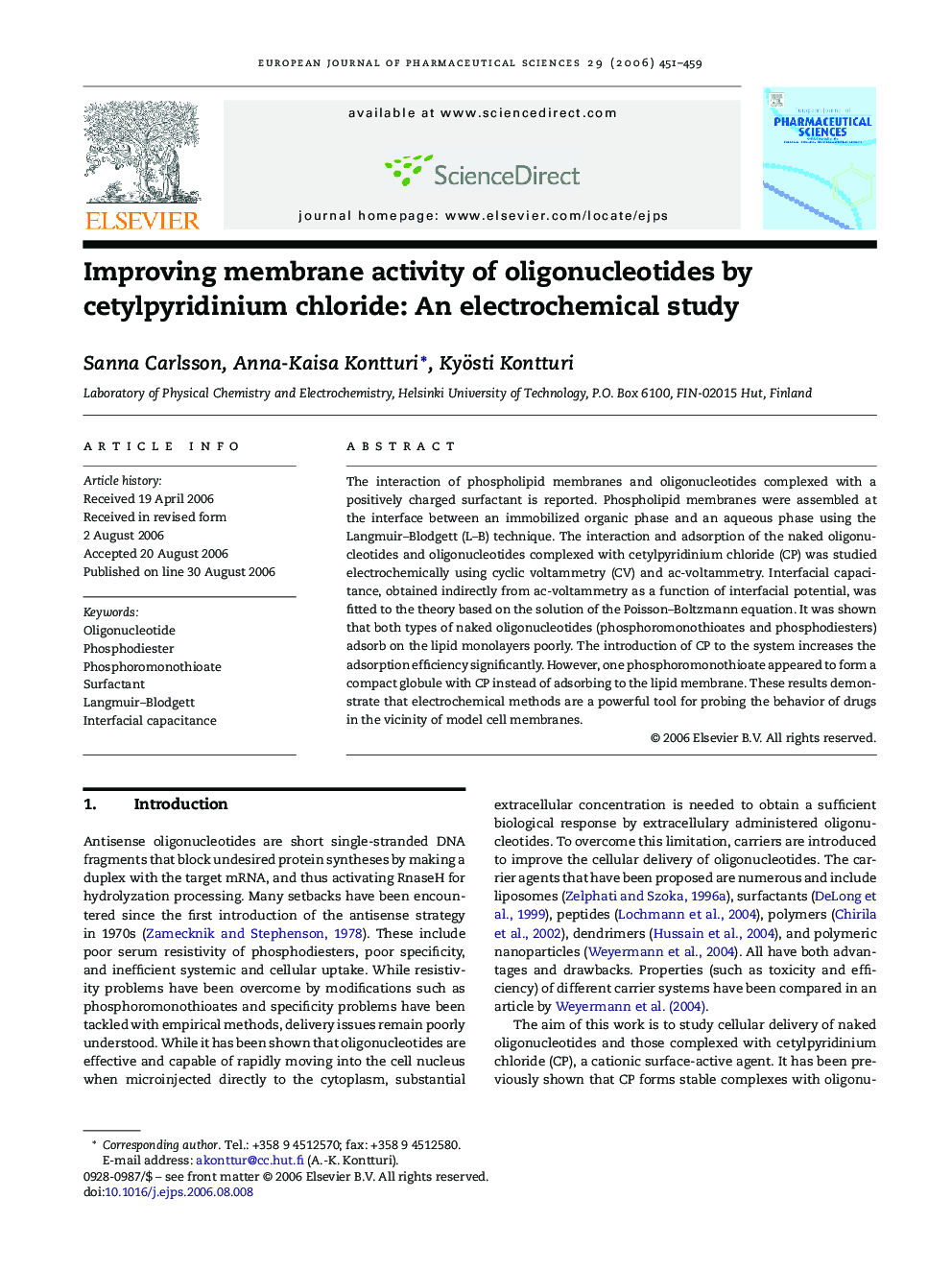| Article ID | Journal | Published Year | Pages | File Type |
|---|---|---|---|---|
| 2482646 | European Journal of Pharmaceutical Sciences | 2006 | 9 Pages |
Abstract
The interaction of phospholipid membranes and oligonucleotides complexed with a positively charged surfactant is reported. Phospholipid membranes were assembled at the interface between an immobilized organic phase and an aqueous phase using the Langmuir-Blodgett (L-B) technique. The interaction and adsorption of the naked oligonucleotides and oligonucleotides complexed with cetylpyridinium chloride (CP) was studied electrochemically using cyclic voltammetry (CV) and ac-voltammetry. Interfacial capacitance, obtained indirectly from ac-voltammetry as a function of interfacial potential, was fitted to the theory based on the solution of the Poisson-Boltzmann equation. It was shown that both types of naked oligonucleotides (phosphoromonothioates and phosphodiesters) adsorb on the lipid monolayers poorly. The introduction of CP to the system increases the adsorption efficiency significantly. However, one phosphoromonothioate appeared to form a compact globule with CP instead of adsorbing to the lipid membrane. These results demonstrate that electrochemical methods are a powerful tool for probing the behavior of drugs in the vicinity of model cell membranes.
Related Topics
Health Sciences
Pharmacology, Toxicology and Pharmaceutical Science
Drug Discovery
Authors
Sanna Carlsson, Anna-Kaisa Kontturi, Kyösti Kontturi,
